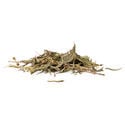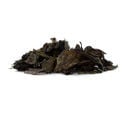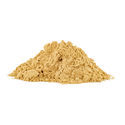-
Seed Shop
-
Feminized
Cannabis seeds -
Autoflowering
Cannabis Seeds -
Regular
Cannabis Seeds -
F1 Hybrid
Cannabis Seeds -
CBD
Cannabis Seeds -
Zamnesia
Cannabis Seeds
-
Top 10’s
- Top 10 Feminized Seeds
- Top 10 Autoflowering Seeds
- Top 10 Regular Seeds
- Top 10 USA Cannabis Strains
- Top 10 Zamnesia Seeds
-
Favourites
- Beginner Strains
- Below 1% THC
- Classic Cannabis Strains
- Cup Winners
- F1 Hybrids
- Fast-Flowering Strains
- High CBD Strains
- High THC Strains
- Mix Packs
- Zamnesia Exclusive Collabs
-
-
Headshop
-
Vaporshop
- Spare Parts & Accessories
- AirVape X
- AirVape XS GO (2021)
- Arizer Air MAX
- Arizer Extreme Q
- Arizer Solo 2
- Arizer V-Tower
- Arizer XQ2
- Boundless CFC 2.0 Vaporizer
- Boundless CFX
- Boundless TERA (V3)
- CRAFTY+
- DaVinci IQ2
- DaVinci IQC
- DaVinci MIQRO
- Dr. Dabber Boost EVO
- Dr. Dabber Stella
- DynaVap Omni 2021
- DynaVap VapCap "M" PLUS 2023
- DynaVap VapCap 'M' 2021
- DynaVap VonG (i) Titanium
- Dynavap The "B" Series
- Eagle Bill
- Firefly 2+
- Flowermate Aura
-
Healthshop
-
Smartshop
-
Shroomshop
-
Growshop
-
Seed Shop
All CategoriesSeed Shop
- Autoflowering Cannabis Seeds
- Feminized Cannabis Seeds
- Zamnesia Seeds
- Zamnesia's Top 10
- CBD Seeds
- F1 Hybrids
- Seed Banks
- Mix Packs
-
Popular Strain Types
- Zamnesia Exclusive Collabs
- Classic Cannabis Strains
- Amnesia Seeds
- Haze Seeds
- Skunk Seeds
- Kush Seeds
- Purple Seeds
- Blueberry Seeds
- Cheese Seeds
- Diesel Seeds
- White Widow Seeds
- Gorilla Seeds
- Northern Lights Seeds
- Granddaddy Purple Seeds
- OG Kush Seeds
- Blue Dream Seeds
- Lemon Haze Seeds
- Bruce Banner Seeds
- Gelato Seeds
- Sour Diesel Seeds
- Jack Herer Seeds
- Girl Scout Cookies Seeds (GSC)
- Wedding Cake Seeds
- Zkittlez Seeds
- Pineapple Express Seeds
- Chemdawg Seeds
- Hindu Kush Seeds
- Mimosa Seeds
- Cup Winners
- F1 Hybrids
- Mix Packs
- Beginner Strains
- High THC Strains
- Fast-Flowering Strains
- Regular Cannabis Seeds
- USA Cannabis Strains
- Cup Winners
- Seedfinder
-
Vaporshop
All CategoriesVaporshop
- Top 10 Vaporizers
- Spare Parts & Accessories
- AirVape X
- AirVape XS GO (2021)
- Arizer Air MAX
- Arizer Extreme Q
- Arizer Solo 2
- Arizer V-Tower
- Arizer XQ2
- Boundless CFC 2.0 Vaporizer
- Boundless CFX
- Boundless TERA (V3)
- CRAFTY+
- DaVinci IQ2
- DaVinci IQC
- DaVinci MIQRO
- Dr. Dabber Boost EVO
- Dr. Dabber Stella
- DynaVap Omni 2021
- DynaVap VapCap "M" PLUS 2023
- DynaVap VapCap 'M' 2021
- DynaVap VonG (i) Titanium
- Dynavap The "B" Series
- Eagle Bill
- Firefly 2+
- Flowermate Aura
- Flowermate Cap Pro
- Flowermate Slick
- Flowermate V5.0S Pro
- G Pen Connect
- G Pen Elite II
- G Pen Micro+
- G Pen Pro
- G Pen Roam
- Hydrology9 Vaporizer
- Hyer Big-E Rig
- MIGHTY
- MIGHTY+
- PAX Mini
- PAX Plus
- PLENTY
- Pax 3 Vaporizer
- Puffco Peak PRO Smart Rig
- Puffco Peak Smart Rig
- Puffco Plus
- Storm Vaporizer
- The Proxy (Puffco)
- VOLCANO CLASSIC
- VOLCANO HYBRID
- Vape-Lifter
-
Smartshop
All CategoriesSmartshop
- Top 10 Smartshop
- Zamnesia Gift Cards
- After Party
- Aphrodisiacs
- Aromatherapy
- Blue Lotus
- CBD Vape Juice
- Capsule Machines
- Crystals, Gemstones & Minerals
- Dream Herbs
- Drug Tests
- Extracts
- Happy Caps
- Herbal Tea
- Herbs & Seeds
- Incense
- Kanna
- Kratom
- LSA Seeds
- Mescaline Cacti
- Microdosing
- Nootropics
- Relaxing
- Salvia divinorum
- Smart Seeds
- Stimulants
- Supplements
- Tinctures
- Vape Herbs
-
TRIBE
All CategoriesTRIBE
- My Membership
- Spend Gift Points
- TRIBE Sale
- Exclusive products
- Earn Extra Gift Points
-
TRIBE
- Early Access
- Refer a Friend
- Information
-
TRIBE
-
Language
 United States
United States
Tuesday, 15 July and Monday, 21 July 2025*
Dream Yoga: Sleep Meditation
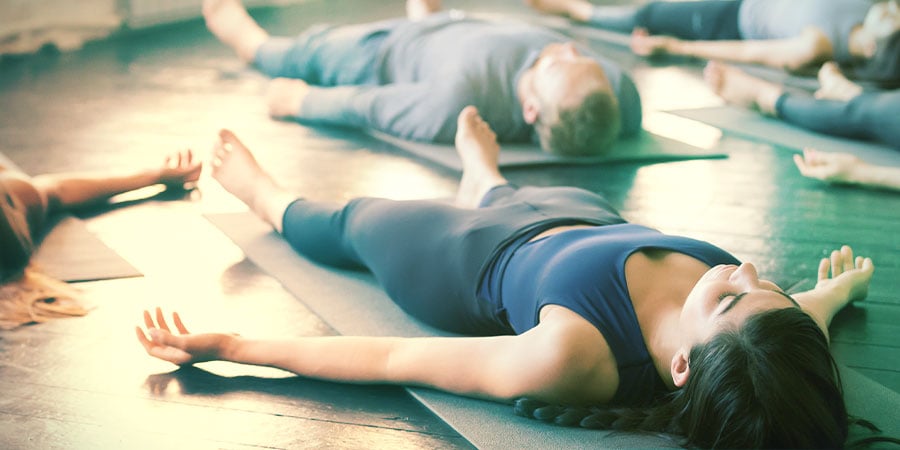
Dream yoga is thought to be one of the six-subtypes of yoga outlined by the Tibetan guru Marpa. The ancient practice of dream yoga is still in practice by monks to this day and consists of six stages.
Humans spend a lot of time sleeping. On average we spend 25 years of our lives exploring the land of slumber, letting our mind and body rest. However, this is an enormous amount of time, and it can be put to much more beneficial use.
The art of dream yoga is one such way of harnessing this downtime for the betterment of the self. It is an ancient Tibetan Bon1 Buddhist practice, in which monks would induce lucid dreams in order to meditate and converse with their ancestors.
They believe that most people spend their time asleep in the “sleep of ignorance”, a state of sleep where there is no awareness. By entering a lucid state, it allows one to grow and develop as a person. Not only this, but it is believed that the practice of dream yoga also allows for us to understand that life is much like a dream, and is shaped by our perceptions. By learning to see through the illusions of our dreams, we can shape and develop our understanding of the waking world, seeing it in a new light.
The six stages of Tibetan dream yoga
.jpg)
In the first stage, the monk is instructed how to become lucid. Once they are lucid, they start the second stage. In this stage they must overcome all fear of their dream – they must realise that nothing in their dream can hurt them, and that they are in control. For example, they will extinguish a fire with their hands, or something along these lines, to prove to themselves that there is no danger.
The third stage of the dream involves meditating on the notion that waking life and the dream are similar, as they both change and develop – that life is illusionary in both states of awareness, as nothing is set in concrete. Therefore both objects in the dream and in the waking world hold no substance.
Next, the monk will begin to manipulate the dream around them, changing the states of objects so that they defy the normal rules of life, turning large objects into small ones, or making heavy objects as light as a feather.
The fifth stage takes the monk one step further, in which they realise that their body is just as in-substantial as all of the objects around them. It allows them to realise that they are not the “dreamer’s body” present within the dream, but the dream itself. The dreamer’s body can be manipulated in exactly the same way that other aspects can be as well, or even made to disappear.
Lastly, once a monk has reached full understanding, they will focus on the images of deities, meditating upon them with single-minded focus. The images of deities are believed to be a doorway to enlightenment, linking the monk to the clear light of the void and allowing for further spiritual growth.
This is a practice that everyone in life can use to grow. A large excuse for negating the self and spiritual growth is that modern Western lifestyle does not allow the time for it. Work and the busy nature of day to day activity is the mantra of many, with very little emphasis on the self being present. However, everyone must sleep, and it is an opportune time to explore the spirituality within.
Herbs To Help Your Dreams Become Lucid
The first stage of Tibetan Dream Yoga, where dreams become lucid, can be achieved with a lot of practice and experience. However, there are certain products that may help you on your way to lucid dream enlightenment. Such products are aptly named 'Dream Herbs'. Dream herbs will help you to realise that you are dreaming, to gain control of your dreams, and to later remember them more vividly.
For example, Silene Capensis, or African Dream Root, is a South African root that will invoke animated and colourful dreams. Uvuma-Omhlope is said to guide one through prophetic and illuminating visions. There are many more Dream Herbs to assist you in your Dream Yoga endeavours, and you can find out more about them on our Dream Herb page.
Yoga Nidra - between the realms
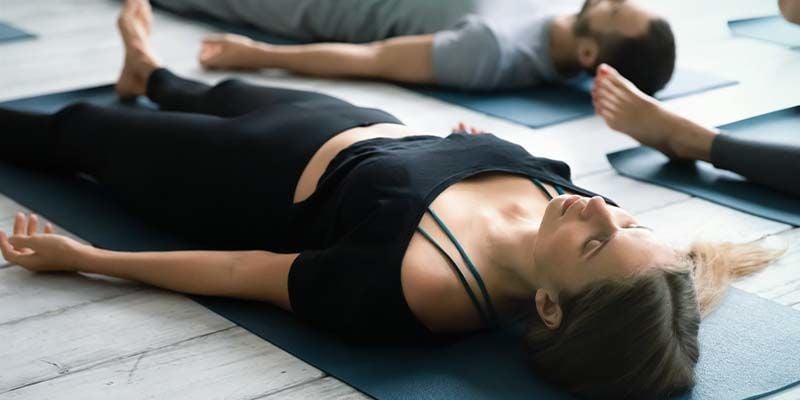
Another practice, known as yoga nidra, is also an alternative way to take advantage of periods of rest. This is an ancient Indian tradition that is also known as psychic sleep. The practice of yoga nidra bears similarities to that of dream yoga. Yoga nidra focuses around concepts of lucid dreaming, but is distinctively different. Within a lucid dream, the dreamer is very rarely aware of the waking world. Yoga nidra is a state of in-between awareness, a rejuvenating and deep mental and physical relaxation that boarders the realms of dream, whilst still maintaining a degree of awareness. It is relaxation through the focus of awareness – aimed at balancing our energy.
Yoga nidra is easy to perform, and requires very little in the way of equipment. All that is needed is a calm mind and a warm comfortable place to lie down.
The practice is performed by lying down on your back with your eyes closed and your arms away from your body, palms facing up. Legs are spread to hip width, with toes falling outwards. The practice of yoga nidra places a large emphasis on the way the body is lying, and it should be as symmetrical as possible – imagine a central line running from crotch to throat.
Once in the correct position, attention is focused inwards, becoming aware of the rhythm of your breath. Next, awareness is focused on one part of the body, such as a leg or a foot. This awareness is slowly rotated around the body, moving from muscle to muscle, consciously releasing all tension in sync with deep breathing
After this awareness is moved around the body with no tension left, you ease into a calm dreamlike state. As it begins to take hold, feelings of lightness and melting are often felt. Once at this state, awareness is shifted back to breathing, allowing for the calm, contemplative dreamlike state to be harnessed.
Doing this can help expand the consciousness and understanding. Both of these practices can be performed by anyone as part of their night time routine, and do not require extra time in a daily schedule. It is an important process for the body and mind, and regular practitioners report a drastic improvement to both physical and psychological well-being.

- Contributors to Wikimedia projects. (2003-03-16T20:03:30Z). Bon - https://en.wikipedia.org
- France
- Germany
- International
- Italy
- Netherlands
- Spain
- United Kingdom
- United States
Dream herbs
-
-
+4 Extra Gift Points
-
£6.00
-
-
£3.44+2 Extra Gift Points
-
-
+3 Extra Gift Points
-
-
£6.47
-
+7 Extra Gift Points
-
+3 Extra Gift Points
You might also like
-

 3 min
14 January 2020
Top 7 Products To Help You Relax
Whether you prefer to smoke your way to tranquility or simply pop a capsule, this handy guide will help you find a product that suits your needs. Here are the 7 best products to help you relax, all of ...
3 min
14 January 2020
Top 7 Products To Help You Relax
Whether you prefer to smoke your way to tranquility or simply pop a capsule, this handy guide will help you find a product that suits your needs. Here are the 7 best products to help you relax, all of ...
-

 1 min
6 November 2017
Best Incense For Relaxation And Sleep
Here at Zamnesia, we bring you all sorts of herbs. Herbal incense is a safe and cost-effective way to unwind. Discover our best varieties of incense for easing the mind, body and soul. ...
1 min
6 November 2017
Best Incense For Relaxation And Sleep
Here at Zamnesia, we bring you all sorts of herbs. Herbal incense is a safe and cost-effective way to unwind. Discover our best varieties of incense for easing the mind, body and soul. ...
Categories
-
Seed Shop
- Feminized Cannabis Seeds
- Autoflowering Cannabis Seeds
- Regular Cannabis Seeds
- F1 Hybrids
- CBD Seeds
- Zamnesia Seeds
- Top 10 Autoflowering Seeds
- Top 10 Regular Seeds
- Top 10 USA Cannabis Strains
- Top 10 Zamnesia Seeds
- Top 10 Feminized Seeds
- Beginner Strains
- Below 1% THC
- Classic Cannabis Strains
- Cup Winners
- F1 Hybrids
- Fast-Flowering Strains
- High CBD Strains
- High THC Strains
- Mix Packs
- Zamnesia Exclusive Collabs
- Amnesia Seeds
- Blueberry Seeds
- Cheese Seeds
- Diesel Seeds
- Gorilla Seeds
- Haze Seeds
- Kush Seeds
- Purple Seeds
- Skunk Seeds
- White Widow Seeds
- Northern Lights Seeds
- Granddaddy Purple Seeds
- OG Kush Seeds
- Blue Dream Seeds
- Lemon Haze Seeds
- Bruce Banner Seeds
- Gelato Seeds
- Sour Diesel Seeds
- Jack Herer Seeds
- Girl Scout Cookies Seeds (GSC)
- Wedding Cake Seeds
- Zkittlez Seeds
- Pineapple Express Seeds
- Chemdawg Seeds
- Hindu Kush Seeds
- Mimosa Seeds
- Zamnesia Seeds
- ACE Seeds
- Advanced Seeds
- Amsterdam Genetics
- Anesia Seeds
- Auto Seeds
- Barney's Farm
- Big Buddha Seeds
- Bomb Seeds
- BSB Genetics
- BSF Seeds
- Buddha Seeds
- Bulldog Seeds
- Cali Connection
- Cannarado Genetics
- CannaBioGen
- CBD Crew
- CBD Seeds
- Compound Genetics
- The Dank Seeds
- Dark Horse Genetics
- Delicious Seeds
- Devil Harvest Original
- Dinafem
- DNA Genetics
- Doctor's Choice
- Dr. Underground
- Dutch Passion
- Elite Seeds
- Eva Seeds
- Exotic Seed
- Expert Seeds
- FastBuds
- Female Seeds
- Fenocan
- Flash Auto Seeds
- French Touch Seeds
- Garden of Green
- GeneSeeds
- Genehtik Seeds
- G13 Labs
- Grass-O-Matic
- Greenhouse Seeds
- Grow Your Own (DNA)
- Growers Choice
- Homegrown Fantaseeds
- House of the Great Gardener
- Humboldt Seed Company
- Humboldt Seed Organization
- Kalashnikov Seeds
- Kannabia
- The Kush Brothers
- Light Buds
- Little Chief Collabs
- Medical Seeds
- Ministry of Cannabis
- Mr. Nice
- Nirvana Seeds
- Original Sensible
- Paradise Seeds
- Perfect Tree
- Pheno Finder
- Philosopher Seeds
- Positronics Seeds
- Purple City Genetics
- Pyramid Seeds
- Rare Dankness
- Reggae Seeds
- Reserva Privada
- Resin Seeds
- Ripper Seeds
- Royal Queen Seeds
- Sagarmatha Seeds
- Samsara Seeds
- Seedstockers
- Sensation Seeds
- Sensi Seeds
- Serious Seeds
- Silent Seeds
- Solfire Gardens
- Soma Seeds
- Spliff Seeds
- Strain Hunters
- Sumo Seeds
- Super Sativa Seed Club
- Super Strains
- Sweet Seeds
- TICAL
- T.H. Seeds
- Top Tao Seeds
- Vision Seeds
- VIP Seeds
- White Label
- World Of Seeds
- Zativo Seeds
- Seed Banks
-
Headshop
-
Vaporshop
-
Healthshop
-
Smartshop
- Top 10 Smartshop
- Zamnesia Gift Cards
- After Party
- Aphrodisiacs
- Aromatherapy
- Blue Lotus
- CBD Vape Juice
- Capsule Machines
- Crystals, Gemstones & Minerals
- Dream Herbs
- Drug Tests
- Extracts
- Happy Caps
- Herbal Tea
- Herbs & Seeds
- Incense
- Kanna
- Kratom
- LSA Seeds
- Mescaline Cacti
- Microdosing
- Nootropics
- Relaxing
- Salvia divinorum
- Smart Seeds
- Stimulants
- Supplements
- Tinctures
- Vape Herbs
-
Shroomshop
-
Growshop
- Top 10 Growshop
- Top 10 Plant Seeds
- All Seeds
- Cacti
- Chilli & Pepper Seeds
- Companion Plants
- Edible Plant Seeds
- Exotic Seeds
- Flower Seeds
- Fruit Seeds
- Herb Seeds
- Interior Plant Seeds
- Microgreens
- Psychoactive Plant Seeds
- Sprouting
- Vegetable Seeds
- Wellness Plant Seeds
- After Harvest
- Climate Control
- Fertilizer
- Grow Tents
- Harvest, Dry & Cure
- LED Grow Lights
- Plant Seeds
- Propagation
-
Merchandise
-
Sale section
Account
Information
Our Offers
Our website won't work without these cookies activated. Therefore functional cookies can't be disabled.
















